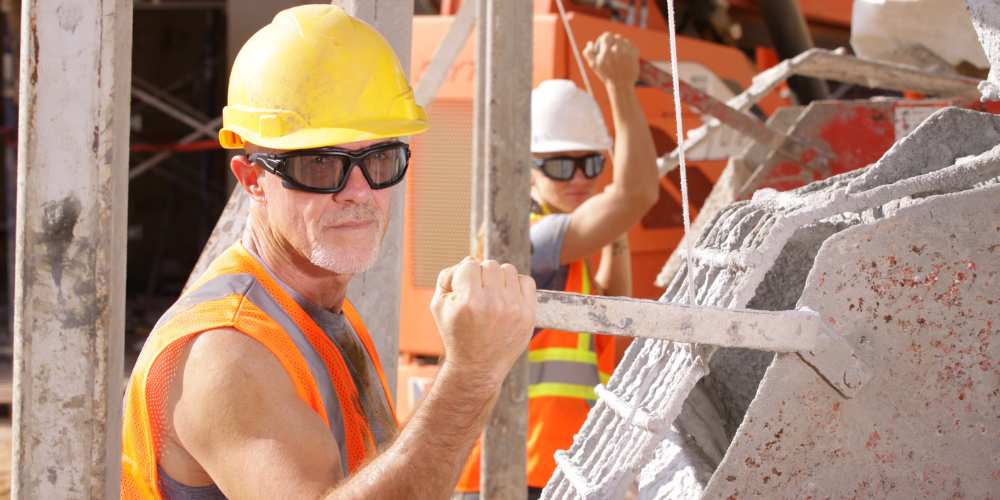
What the Newest ANSI Standards Mean for Safety Glasses
ANSI is a term that gets used a lot in the world of personal protective equipment (PPE). It may have you wondering, "What does ANSI stand for?" ANSI is an acronym for the American National Standards Institute. ANSI oversees the standards and conformity of PPE equipment like safety glasses in the US.
The organization says its mission is to "enhance both the global competitiveness of U.S. business and the U.S. quality of life by promoting and facilitating voluntary consensus standards and conformity assessment systems, and safeguarding their integrity." Simply put, this means that safety coordinators and workers can know that the ANSI-rated safety equipment they are buying meets strict standards
Updated ANSI Standards
ANSI renews its standards every five years to keep up with the latest worker needs and emerging technology. The 2015 and 2020 updates (Z87.1-2020) were especially monumental for safety glasses. To help distributors and end users make the best purchase decisions, we have broken down the updated standards to lay out exactly what they mean.
Relaxed Optics
ANSI renews its standards every five years to keep up with the latest worker needs and emerging technology. The 2015 and 2020 updates (Z87.1-2020) were especially monumental for safety glasses. To help distributors and end users make the best purchase decisions, we have broken down the updated standards to lay out exactly what they mean.
Anti-Fog
Anti-fog for safety eyewear has been a hot topic in the last year; so much so, we recently published a blog post to answer all your anti-fog FAQs. That post touches on how ANSI did not have a standard for anti-fog until the 2020 revision. Eyewear with an "X" marking on the lens signifies it meets the standard for anti-fog protection. This means that it will resist fog for at least 8 seconds. All of our H2MAX safety glasses meet this requirement, as do some of our dual pane H2X options like the I-Force, I-Force Slim, Capstone Dual, and the Venture Gear Tactical Loadout.
Transmittance Allowance
Wraparound safety lenses, a Pyramex innovation, are often thicker in the middle and thinner on the sides. New transmittance standards state that eyewear needs to be tested not only in the middle but also on the sides where the lens is thinnest. As wraparound safety glasses have gained popularity – since the launch of the Venture II, ANSI wants to ensure that workers will be protected no matter what part of the glass they are looking through.
ANSI made other updates in 2020 including standards related to welding filter shades and dark-state tolerance for auto-darkening welding filters. All these standard updates seek to better protect workers and give manufacturers safety standards to meet to classify the safety level of their PPE.
How to Spot ANSI-Approved Safety Glasses
Eyewear that meets the ANSI optical standard will be marked on the lens with a "Z87." Safety glasses that meet the ANSI optical standard as well as other additional standards will have specific markings. Some examples of specific markings are:
- Z87+ indicates passing high-velocity impact and high mass testing. This provides workers with a high level of protection from impact.
- X indicates passing anti-fog testing. This protects workers in humid or temperature changing environments.
- L1.3- L10 indicates the amount of visible light allowed through the lens. L10 being the least amount allowed. L4+ are not suitable for driving.
- R1.3-10 indicates how much infrared light is transmitted through the lens. R10 allows the least amount of infrared light through.
- U2-U6 indicates the average amount of UV transmittance which protects workers’ eyes from harmful UV rays based on their need or preference. U6 offers the most amount of protection.
- H indicates eyewear was made for smaller head sizes which is helpful as fields like construction see a growing number of women in the workforce.
- D3-5 indicates eyewear that protects against droplets (splash) and dust. D3 protects from droplets, D4 protects from dust, and D5 protects from fine dust.
- V indicates a photochromatic or variable tint while S indicates a special lens tint.

Because Pyramex is dedicated to the safety of those who wear our products, all our safety glasses and other equipment are independently tested by outside labs to ensure they meet the requirements set forth by ANSI. Providing an excellent product is at the heart of Pyramex and we will continue to produce innovative designs and technology to improve the lives of workers.
If you have any questions about our safety glasses or other products and what ANSI standards they meet, reach out to your sales representative, or contact our customer service team. You can also find this information on our product sheets.




